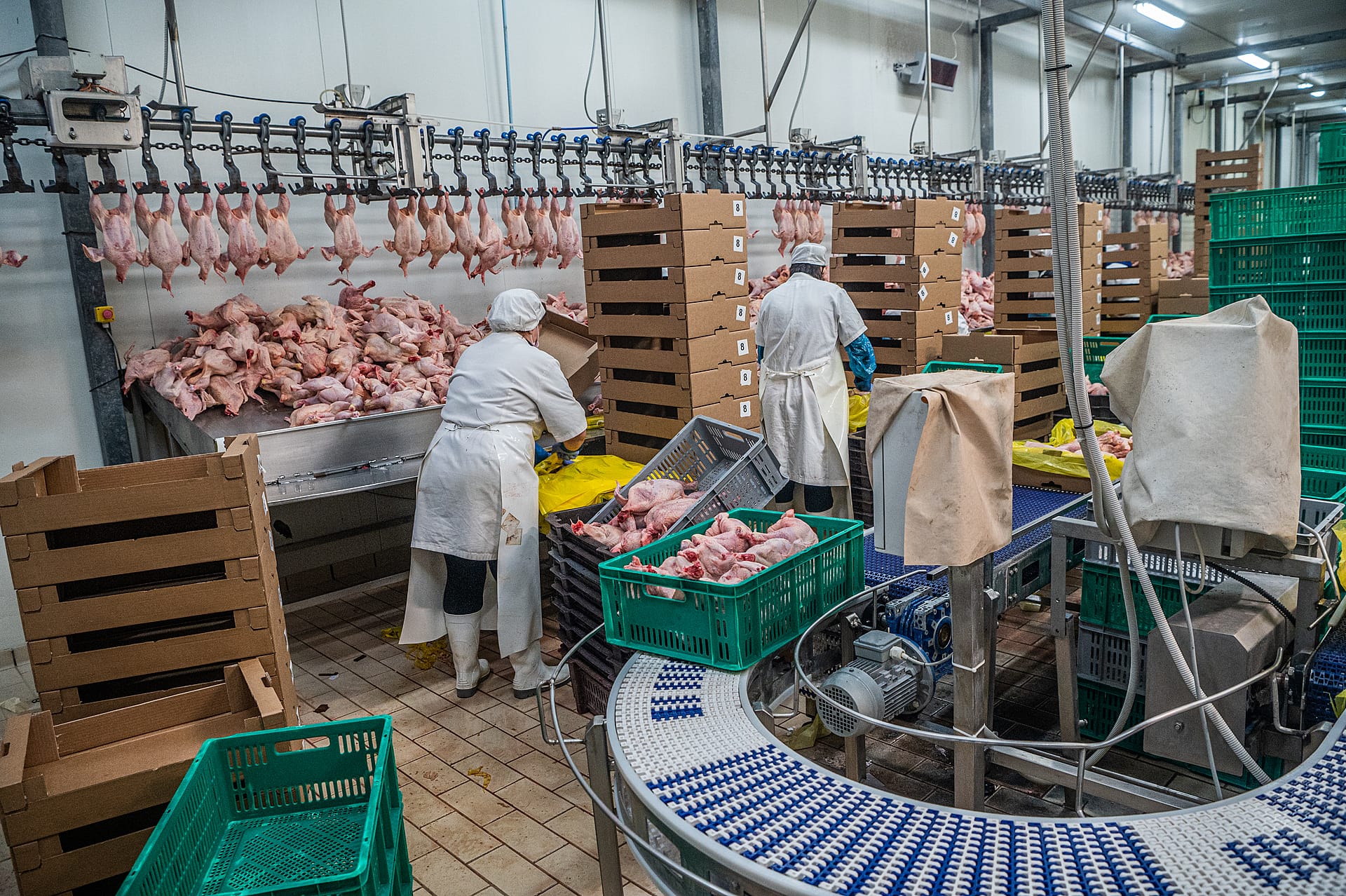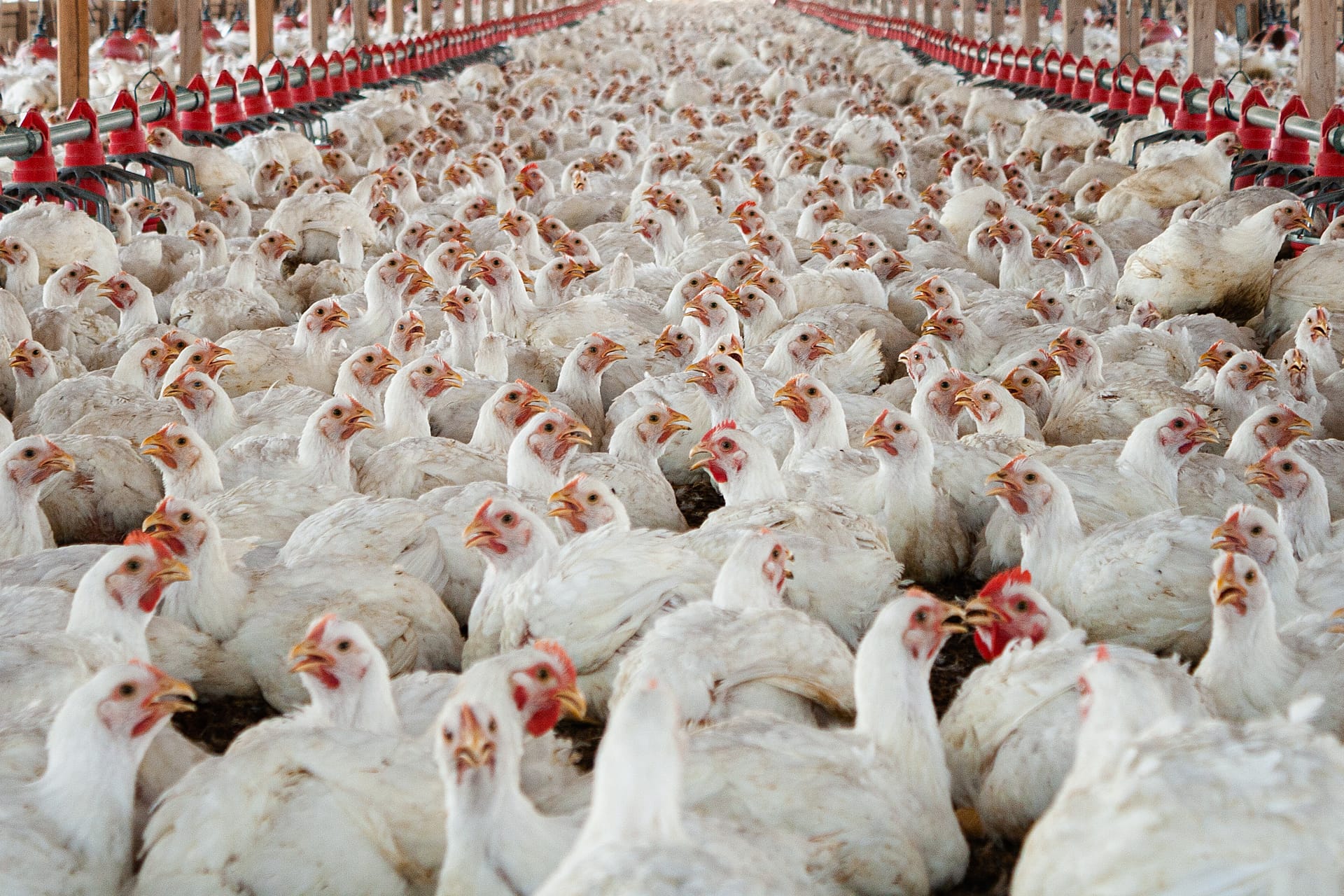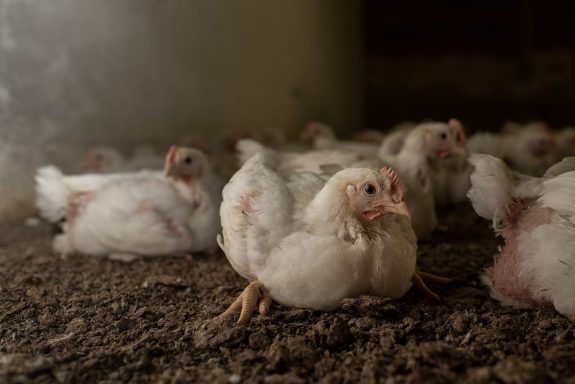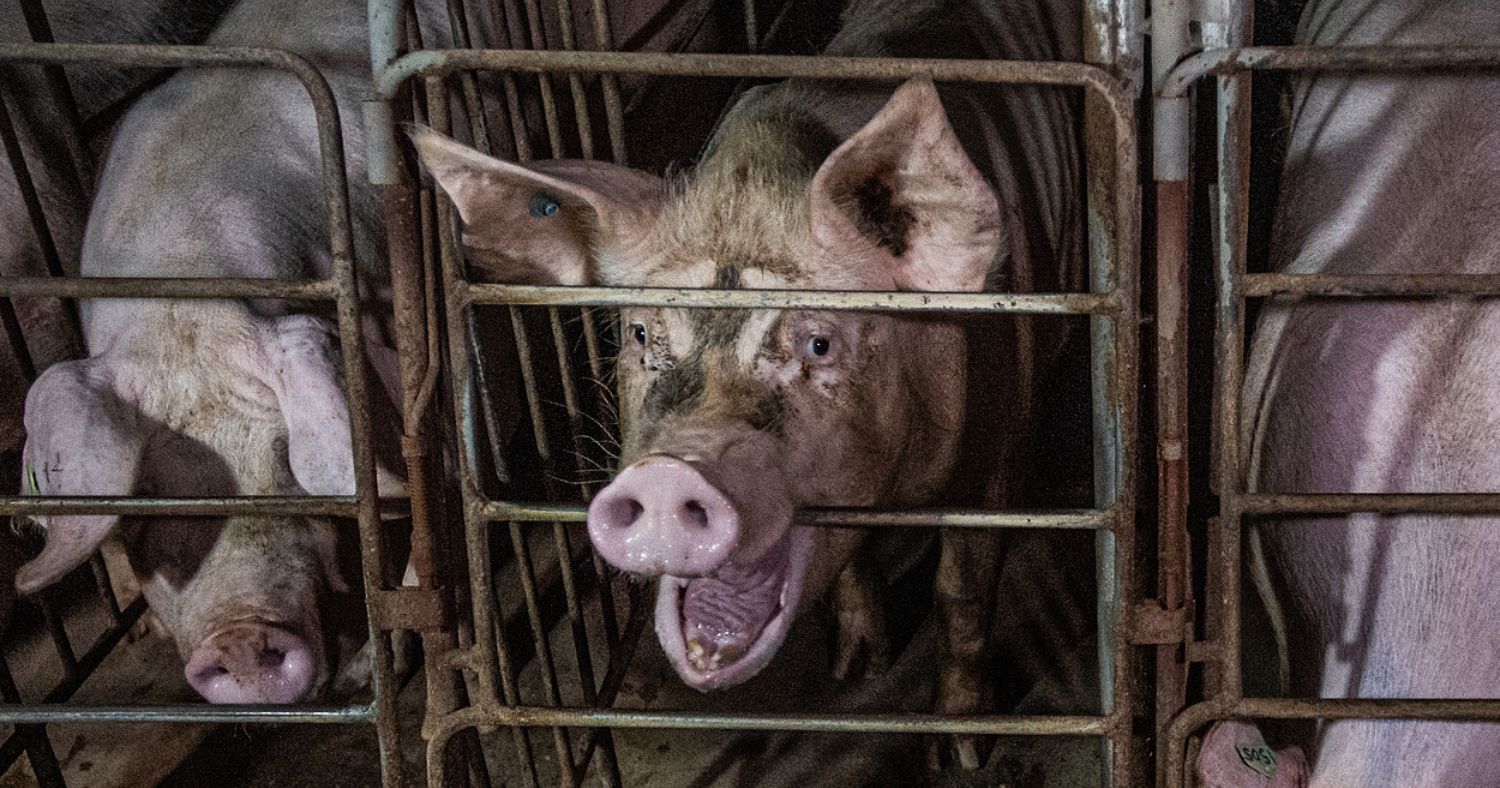It’s well known that eating red meat can be harmful to human health. Meat products from pigs and cows come with a long list of health risks, including cardiovascular disease, cancer, diabetes, and an overall increased risk of mortality. Even the The Canadian Food Inspection Agency (CFIA) agrees that pork can’t be marketed as “healthy”.
Many people have chosen to ditch red meat in response to these health concerns, thinking that eating chickens is a healthier option. But it’s not just bacon and burgers that are harmful—chicken meat is risky, too. Here are the top five reasons why eating chickens is a terrible idea.
1. Fecal Contamination & Food Poisoning
Chicken meat is one of the most common sources of food poisoning. There’s a reason one of the first rules of food safety is to keep raw chicken meat away from other foods. E. coli, salmonella, campylobacter, and clostridium bacteria can all cause painful illnesses in humans, including diarrhea, stomach pain, nausea, vomiting, possibly urinary tract infections, and even death. These dangerous forms of bacteria are found in or on chicken carcasses, and largely come from fecal matter.

2. Antibiotic-Resistant Bacteria
Canadian chicken and egg farms often confine tens of thousands of birds. Because of the scale at which these farms operate, most farmers don’t bother to provide veterinary care for individual animals. Instead, they feed antibiotics directly to birds to ward off bacterial infections. Chicken farmers like to tell buyers that chicken meat contains no antibiotic residue because of a withdrawal period over the last 20 percent (about a week) of the birds’ lives, but this doesn’t mean the birds are raised without antibiotics.
This overuse can lead to antibiotic resistance, an issue that the World Health Organization (WHO) calls one of the biggest threats to global health. The antibiotics we give to animals can also make their way to humans through food chains and into the environment via animal waste. We only have a limited number of effective antibiotics, and a growing number of infections are becoming more difficult (and sometimes impossible) to treat in humans thanks to resistant bacteria.
3. High Cholesterol & Heart Disease
A recent study published in the American Journal of Clinical Nutrition suggests that white meat may be no better than red meat when it comes to cholesterol levels. Researchers tested the effects of red meat, white meat, and plant-based protein sources, finding that meat from cows, pigs, chickens, and turkeys raised LDL (so-called “bad”) cholesterol to the same extent, when compared to plant-based proteins. High levels of cholesterol can increase the risk of heart disease, and opting for a plant-based diet can significantly lower this risk.

4. The Next Pandemic
Since the onset of the COVID-19 pandemic, people are increasingly aware of how packing animals tightly into barns increases zoonotic disease risks. Highly Pathogenic Avian Influenza (H5N1), commonly known as avian flu, is currently ravaging farms and wildlife in Canada and around the world, and has the potential to become the next pandemic.
Viruses like these can mutate to infect other species, and avian flu is already transmitting to mammals like dogs, skunks, and minks. Many experts believe that if the latest strain crosses over to humans, it could be far more deadly than COVID-19. In the last 20 years, there have been 868 confirmed cases of human infection with avian flu and a shocking 457 (or 56%) of those cases were fatalities.
5. Worker Injuries
Slaughterhouses are among the most dangerous jobs in the country, and eating chickens and other animals perpetuates this harmful work. For decades, chicken slaughterhouses with high line speeds have caused workers, often from marginalized communities, to suffer severe injuries, including knife injuries, slips and falls from blood-soaked floors, and injuries from repetitive motion.
Many of these injuries go unreported because workers often fear losing their jobs–especially in the case of temporary foreign workers who risk being deported if they are fired.

Chickens Suffer in the Food Industry
Chickens suffer at a nearly incomprehensible scale when farmed for their meat and eggs Canada alone slaughters hundreds of millions of chickens every year. The vast majority of these animals are raised in cruel factory farms, where they’re packed by the thousands into filthy warehouses, and bred to grow so quickly that their bodies often give out.
Shockingly, there are no laws ensuring the welfare of chickens on farms. While voluntary, industry-written codes of practice exist, there is no way to legally enforce these rules, and they still allow for heartbreaking abuse.
One of the cruellest farming practices is locking up egg-laying hens in cages, where they don’t even have room to spread their wings. Canada’s largest retailers, including Loblaws, still mostly sell caged eggs.
Plant-Based Is Good for Human & Animal Health
A plant-based diet has been shown to reduce the risk of heart disease, type-2 diabetes, cancer, obesity, and osteoporosis. Opting for plant-based foods over meat, dairy, and eggs also helps end suffering to the billions of animals who are raised and slaughtered for human consumption every year. For your health and for the animals, consider making this simple switch.
Banner: Stefano Belacchi | We Animals Media



